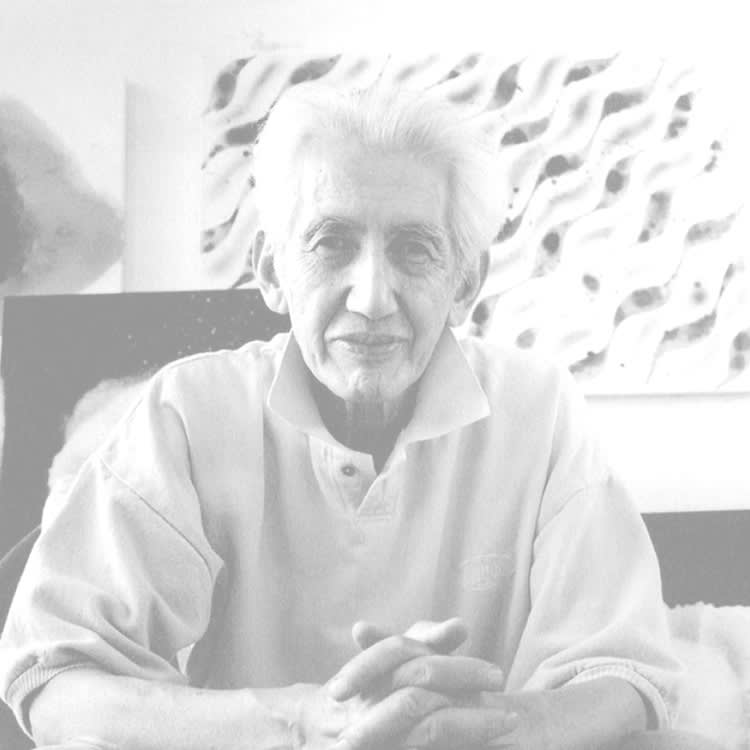HISAO DOMOTO 1928-2013
Hisao Domoto (1928-2013) was a major 20th-century Japanese artist, whose works are available at HELENE BAILLY gallery. At the crossroads of cultures, he established himself as a key figure in lyrical abstraction, blending influences from traditional Japanese painting and Western avant-garde movements. His powerful gestures and vibrant compositions reflect a continuous quest for balance between matter, movement, and energy.
Born in 1928 in Kyoto, into a family of artists, he was initially trained in nihonga, a refined and codified form of Japanese painting that deeply influenced his approach to color and texture. However, driven by a desire for experimentation, he quickly moved away from academic conventions to explore abstraction. His relocation to Paris in 1955 marked a turning point in his career: he became part of the École de Paris, where he engaged with artists such as Georges Mathieu, Jean-Paul Riopelle, and Pierre Soulages.
During the 1950s and 1960s, Hisao Domoto was an artist who revolutionized abstraction, developing a spontaneous and expressive gestural style, where bold color splashes and dynamic impasto techniques created works of rare intensity. He participated in major international exhibitions, including the São Paulo Biennale and documenta in Kassel, solidifying his influence on the global art scene.
His work evolved over the decades, exploring more structured textures and refined compositions, while maintaining the signature tension between order and chaos that defines his artistic identity. His legacy, bridging tradition and modernity, continues to inspire new generations of artists and collectors.

